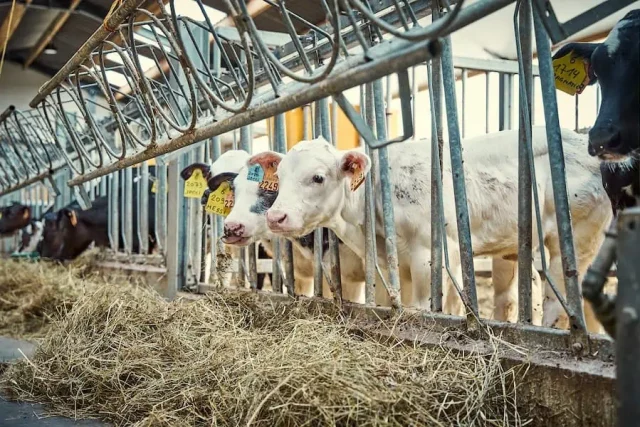The United States engaged in a brutal civil war from 1861 to 1865. But how did the civil war help the rise of the cattle industry?
Like horses, cattle were brought to America by the Europeans. And by the 1850s, Southern Texas became a hub for cattle farming, with the Texas Longhorn being the primary breed in the area.
The Texas Longhorns are hardy and can survive on free range in Texas. The only major drawback this cattle breed had was their poor meat quality.
This post contains information on how the cattle industry boomed post-civil war and other related information you need to know. Keep reading for more details.
How Did The Civil War Help The Rise Of The Cattle Industry
The civil war in the United States between 1861 and 1865 was brutal. It costs the country thousands of lives and properties worth a fortune.
The Southern and Northern armies had good reasons to engage in the civil war. They were fighting for their rights, western expansion, and ending slavery.
The American Civil War remains the deadliest war on American soil. The war brought massive changes to people’s daily lives and impacted agriculture, including other industries.
Many industries took time to find their feet when the war ended. But surprisingly, that wasn’t the case in the cattle industry. The industry blossomed after the war, but there are reasons it did. Check them out below.
1: The 1862 blocking of the Texas trade was a blessing in disguise:
Texas was a major cattle hub in America even before the war started. The reason was the region’s longhorn cattle and open plains. But in 1861, many ranchers left their farming business to fight for the south.
Unfortunately, in 1862, the Union Army struck. They blocked the confederate ports to stop smuggling war materials into the confederate and export of cotton.
The Union blocked the Texas cattle trade. Meaning there was no way ranches could trade cattle as the war continued.
The 1862 blockage of the Texas cattle trade was a blessing in disguise. Why? Here’s what happened.
Longhorn cattle are tough. They can survive harsh conditions and terrains. The ranchers could not conduct their usual cattle trade and had to flee the area as the war continued.
However, their absence did help. The cattle started breeding and multiplying. So, when the war ended, and the ranches returned to Texas and other states, they met millions of cattle.
The longhorn cattle had survived the war and harsh conditions. They bred in the absence of the ranches and multiplied in number.
The cattle were a blessing in disguise for the ranches, as they needed to build their economy and income from scratch since the war had ended.
With millions of cattle littered over several states, including Texas, it was important for the ranches to seek ways to sell their livestock. So, they started seeking opportunities to sell off their cattle in the north.
A Handy Tip: The war helped the cattle to multiply, as there was no way the ranches could trade them as the war continued.
This gave the few cattle that were left time to multiply in number.
2: The price of beef varied in the north and south:
The major uses of the Texas cattle were skin and tallow. People didn’t consume their beef before the war commenced.
Things changed for the better after the war. People started considering the Texas cattle for consumption, leading to a high demand for beef.
Beef was cheaper in the south than in the north when the war ended, and the reason isn’t far-fetched. The southerners returned to a massive herd of cattle after the war. So, there were more cattle in the south.
The difference in the price of beef sold in the south and north was massive. For instance, in the south, a cut of beef was sold for $5. But in the north, the same cut of beef was sold for $40.
So the Southerners sought ways to make a profit, given the vast price difference of beef in their region compared to others. They sought ways to move their cattle to the north to profit considerably.
A Handy Tip: States like Missouri and Kansas had active quarantine laws that made it hard for ranches to move their cattle from the south to these states.
Some northern states believed the Texas longhorn could spread Texas fever, a disease ticks spread. They believed the disease could spread to other animals and cause significant loss to farmers in the state.
The good news is the ranches found a way to bypass quarantine laws passed by some states. And they did so without breaking their rules.
Joseph McCoy was instrumental to the Texas cattle industry’s rise after the way. He allowed the ranches to move their cattle to other regions.
What did Joseph McCoy do? He created a cow town in Chicago, Illinois.
McCoy was also a rancher in Chicago who saw an opportunity in trading Texas cattle. He was desperate to bring the Texas cattle to Chicago and then distribute them to the northeast, where he could profit more.
McCoy made a smart move that made his ambition to run a cattle town in Chicago successful. He approached railroad companies seeking to increase freight travel post-war and teamed up with several.
McCoy didn’t stop there. He invested money in building a town fitting for ranchers. The town had a bank, stockyard, and hotel near a railway known as Abilene.
Joseph McCoy’s cow town was a huge success. It was among the first cow towns dedicated to transporting cows to the eastern regions.
Between 1867 and 1881, Joseph McCoy traded millions of cattle. He had moved over 2 million cattle to Chicago from his cow town, Abilene. McCoy’s cattle trade was termed “beef bonanza” because of the volume of livestock traded within a short time.
3: Increase in railway in the late 19th century:
Starting in the early 1870s, the United States government focused on railroad construction. Before 1871, they lay 45,000 miles. Between 1871 and 1900, they laid another 1700 miles.
In 1862, Congress unanimously agreed and passed the Pacific Railway Act. The aim was to construct a transcontinental railroad.
The first section of the transcontinental railroad was completed in 1869. However, four extra transcontinental railroads were added by 1900.
The cattle trade started growing faster following the development of railway tracks nationwide. It made the shipment of cattle to newer markets quicker and easier.
Ranchers started making huge profits, but the most important thing was that the increased demands for beef in northern cities were met.
A Handy Tip: Among the meat dealers after the civil war, one man saw the need to diversify into different lines of the cattle trade. His name is Gustavus Swift.
He noticed that meatpacking posed a vast opportunity and would make more profit than selling the whole cattle. Thus 1877, the cattle industry welcomed the first-ever refrigerated railway car.
The refrigerated railroad car allowed Gustavus to ship slaughtered meat from Chicago eastward.
4: The U.S. government intervention:
The government also contributed to the rise of the cattle industry after the war. They made ranchers richer.
Ranchers made huge profits from selling surplus cattle directly to the United States government.
Conclusion
How did the civil war help the rise of the cattle industry? The battle was a blessing in disguise for the ranchers.
During the war, the Union Army blocked the transportation of cattle, making it difficult for ranchers to sell their livestock. In addition, most ranchers joined the army to defend their region.
After the war, many ranchers returned home to thousands of cattle on their land. The Texas longhorns are harder and can survive harsh terrains. They had bred during the war and multiplied in number.
In total, ranchers came back home to over 5 million cattle. Another thing that contributed to the rise of the cattle industry was the difference in the price of beef in the South and North after the war.
In the south, beef was sold for as little as $5; in the north, beef was sold for as much as $40. So, ranchers in the south started devising ways to transport their cattle to the country’s northern part to make huge profits.
The U.S. government’s decision to build more railroads boosted the cattle industry. It made it possible for ranchers to reach farther and new markets.












